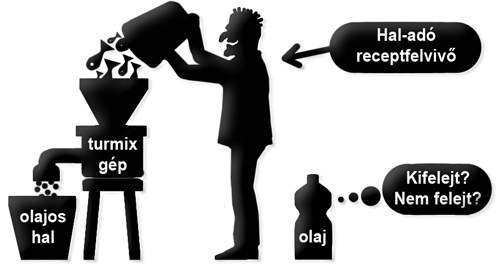
In the first part of our article, the Coffee with milk - Beginners guide to Recipes was about basic recipes. However, as the page lives on its own, more and more things are emerging and I would like to draw your attention to make recipes as accurate as possible.
1. Evaporation
Most foods doesn't affected by the evaporation of the water content of foods. For example, a smoothie does not lose weight by mixing the ingredients. Take a juicy meat, which we boil with water then fry. fat. If you also add the water amount to the recipe, the calorie content per 100 g wont be right (half of the water evaporates).
As a solution to the problem, I recommend that you measure the weight of the whole food before and after preparation (although before it does not make much sense because it is as much as the weight of the ingredients has been added).
So if you have 2 kg of pre-frying something (zero balance can save lives), and after the baking is 1.5 kg, then it means that the calories remained the same but the weight decreased by half a kilo.
In this case you can put "Evaporation" as an ingredient and a minus sign (-500 grams). Then the value will be correct.
For an example open this food: Red onion with roasted beetroot
2. Boiled or raw? It does matter!
Many times I see raw pasta and rice as ingredients, although the recipe says they should be cooked before, which makes a big differenc in terms of counting. Cooked pasta soaks up one and a half kg of water per kilo, ie 1 kg of pasta will make 2.5 kg of cooked pasta while the calorie content will remain the same. That is why the pasta is 380 kcal / 100g, while the cooked pasta is 155 kcal / 100g.
The same applies to rice, which soaks up about the same amount of water.
3. Most commonly missed ingredients
Very often, you miss the oil which is absorbed by fried meat or roasted vegetables, and water in case of soups. It is also included in the FAQ, but I will describe it here as well:
In the ingredients of our recipes we should show only the quantities we actually eat.
There are two basic things to do: cook in water or fry in a grease.
If you cook in water (eg vegetables), then water does not have to be included in the ingredients because we do not drink it.
But if we cook soup, we must pick the exact amount of water to be able to calculate the nutrient content of 100 ml soup.
If you fry in fat or oil (eg fried potatoes, fried meat), you only have to add as much fat to the ingredients as the food is absorbed. Here an average value is calculated: 1 kg of meat or vegetables takes about 50 grams of fat (about 4 tablespoons of oil). The breaded things absorb about two times more, ie 100 grams per kilo.
Obviously, if we make a goulash soup and fry the onion in the bacon at the beginning then we must add the whole amount of fat as it is part of the food we eat.
In the rest of this article, you will find advice about sending recipes to a common database. It is getting harder to keep up with the common database, as most of them get faulty or incomplete and it's a lot of time to fix them. Therefore I ask you to pay attention to the following:
4. Description of the recipe
If you send your recipe in to commond database, your recipes must have a description.
5. Source
Whenever possible, send a source (link, or whether if it's a family recipe or local specialty).
6. Weight of the most common unit
Please use our general serving sizes:
- garnish portion=300g
- salad portion=250g
- vegetable dish portion=400g
- meat for vegetable dish portion=70g
- soup portion=4 dl
- meat portion=130g
- one-course dish portion=400g
7. Spelling
When describing the recipes, please listen to the spelling.
Finally, I would like to thank all of you for the many good recipes, useful posts, and everything else that contributes to the development of the site!
